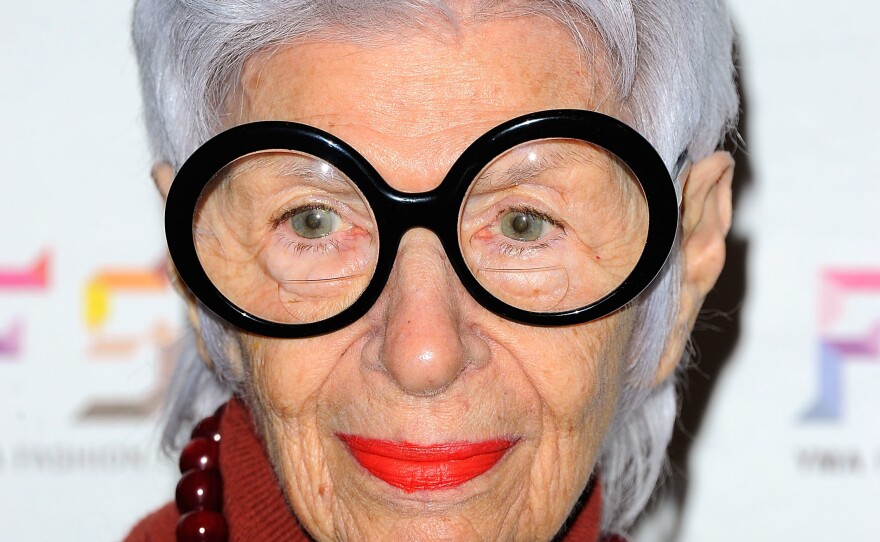Every year, we remember some of the writers, actors, musicians, filmmakers and performers who died over the past year, and whose lifetime of creative work helped shape our world. Here are just a few of them, listed chronologically below by the dates of their deaths. (You can find a tribute to many more musicians here.)
Chita Rivera, Broadway boundary breaker

Beloved for the roles she created in such musicals as West Side Story, Bye Bye Birdie, Chicago and Kiss of the Spiderwoman, Rivera carved out space for herself on stages that did not then easily accept Latina leading ladies. Her prowess as a dancer became apparent in childhood, during ballet classes in Washington D.C. Over a six-decade-ong career, Rivera won multiple Tony awards, the Presidential Medal of Freedom and was the first Latina to receive the Kennedy Center Honors. One of the great performers of her era, Rivera was never interested in making television or movies – until the end of her long life, she was a Broadway baby. Read Jeff Lunden's remembrance.
Seiji Ozawa, classical conductor for the Boston Symphony Orchestra

Born in China to Japanese parents, Ozawa shook up the classical music establishment when he was appointed to lead a top American orchestra in 1973. Young, hip and unorthodox, he represented a radical departure from an artistic tradition that rarely placed men of color (or any women) on prestigious podiums. He was a protege of Leonard Bernstein, with whom he shared an adventurousness and dynamism that captivated fans beyond the world of classical music. Ozawa also championed cross-cultural exchange; notably, he brought the BSO to China in 1979. Read Andrea Shea and Tom Huizenga's remembrance.
Iris Apfel, famed designer and proud 'geriatric starlet'

Ultimately, Apfel was best known for her look: owlish round glasses, heaps of clanking jewelry, and cropped grey hair. All of it, fashion. Apfel was an early example of what we'd now call an influencer. She insisted on being seen. Her career stretched from the 1950s until the late 2010s. It included stints as a White House designer, Home Shopping Network entrepreneur, writer, socialite and professor. At age 97, she signed with a top-tier modeling firm. She was the subject of a celebrated documentary and a retrospective at the Metropolitan Museum of Art's Costume Institute. And Apfel was the oldest person with a Barbie doll made by Mattel in her image. Read Neda Ulaby's remembrance.
Faith Ringgold, whose art boldly transmuted a complex world into beauty
While probably best known for vibrant, pictorial quilts that summoned various aspects of Black American history and representation, Ringgold was a classically trained painter who bridged arts and crafts in deeply feminist multimedia work that, over a decades-long career, included cloth dolls, mosaic murals and picture books for children. A leading American artist who fought for increased diversity, her work is included in the permanent collection of the Metropolitan Museum of Art, the Smithsonian American Art Museum, the Studio Museum in Harlem and many others. Read Andrew Limbong's remembrance.
Paul Auster, novelist whose moody, mysterious work evoked a vanishing New York

He was dubbed "the patron saint of literary Brooklyn" by The New York Times, where Auster regularly appeared on the bestseller list for works such as The New York Trilogy that included his breakthrough novel, 1985's City of Glass. A prolific postwar writer who deftly swirled the surreal into such familiar genres as the detective novel and memoir, Auster also dabbled in filmmaking, writing scripts for a few art-house hits. Read Tom Vitale's remembrance.
Donald Sutherland, film star who brought subtle subversion to every role
If you were a Hollywood executive who wanted an off-kilter authority figure, you would call Donald Sutherland. The Canadian-born actor appeared in more than 200 films and TV shows. He played doctors, like the wiseacre lead in the 1970 movie M*A*S*H, and paranoid government figures, as in Oliver Stone's film JFK. He was excellent as a fascist, whether it be in Bernardo Bertolucci's 1900 or as President Snow in the wildly successful The Hunger Games franchise. But in films such as Ordinary People and Don't Look Now, Sutherland brought vulnerability to playing fathers. In real life, he was the father of five, including actor Kiefer Sutherland. Read Mansee Khurana's remembrance.
Richard Simmons, exercise enthusiast and lovable pop culture icon

With his curly mop of hair, winsome attitude and candy-striped shorts, Simmons set out to encourage people to get fit, even those whose body types did not reflect the punishing standards of perfection at the time. He included all kinds of bodies in the bracingly upbeat VHS tapes that became foundational to his empire in the 1980s. Sweatin' to the Oldies sold more than 20 million copies alone. While Simmons received some criticism for fat-shaming, and later mystified fans by withdrawing from the public, he was a transformative figure in the nascent exercise industry, encouraging consumers to see exercise as playful, rather than painful. Read Kyle Norris' remembrance here.
Bob Newhart, comedy legend

A former accountant, Newhart's dour but deeply loveable persona was first established in a series of hit comedy records in the 1960s. Their success essentially invented a genre. Newhart moved seamlessly to television, hosting his own variety show, then starred in not one, but two eponymous sitcoms throughout the 1970s and '80s, Newhart and The Bob Newhart Show, in which he played a psychologist and a Vermont innkeeper respectively. Read Eric Deggans' remembrance here.
Phil Donahue, who made daytime television his kingdom

Donahue is credited with inventing the audience participation talk show. His topics were thoughtful – abortion, atheism, racism – and his tone was measured. He never talked down to his predominantly female audience. The Phil Donahue Show ran for nearly 30 years, and after 6,000 episodes, he stepped down from a television landscape that, aside from Oprah Winfrey, was populated by much more sensational and scandal-seeking imitators. Read Eric Deggans' remembrance here.
James Earl Jones, beloved baritone acting legend

His stentorian tones enriched classic films ranging from Star Wars to The Lion King. "I am your father" and "You are my son" are two of his most immortal lines, but James Earl Jones grew up without his birth parents. He was abandoned as a child. The traumatized little boy with a stutter became one of the most in-demand actors in Hollywood and on Broadway. A boundary-shattering Black actor, whose early career included playing a doctor on daytime TV in the 1960s, his accolades included Tonys, Emmys, a lifetime achievement Oscar and a National Medal of the Arts. Read Allison Keyes' remembrance here.
Michaela DePrince, trailblazing ballerina and humanitarian

DePrince was only 29 when she died of undisclosed causes earlier this year, but the celebrated ballerina's life was packed with inspiring accomplishments. The youngest principal dancer at the Dance Theatre of Harlem, DePrince also found fans through TV's Dancing With the Stars and Beyonce's Lemonade music videos. She recounted her journey from an orphanage in Sierra Leone to international acclaim in her 2014 memoir Taking Flight: From War Orphan to Star Ballerina. Read Clare Marie Schneider and Elizabeth Blair's remembrance.
Maggie Smith, formidable dame of theater, film and television

You might know her as the tart-tongued Dowager Countess on Downton Abbey or as Professor Minerva McGonagall in the Harry Potter movies, but Maggie Smith's illustrious stage career began decades earlier, as a teenage star of Shakespeare at the Oxford Playhouse in England. Her work on screen included indelible performances in such films as The Prime of Miss Jean Brodie, A Room With A View and Gosford Park. Read Bob Mondello's remembrance.
Kris Kristofferson, a crossover superstar in country music and movies

A once-in-a-generation talent, Kristofferson was a Rhodes scholar from Brownsville, Texas. who wrote his first country song at age 11. A celebrated college athlete, he enlisted in the U.S. Army after studying literature at the University of Oxford. Then he broke into the Nashville music scene, first working as a janitor before being discovered by Johnny Cash, writing songs for the likes of Janis Joplin and recording hits of his own. Musical stardom led to the movies. Kristofferson acted in dozens of them, from the legendary flop Heaven's Gate to the vampire classic Blade. Read Melissa Block's remembrance here.
Adam Abeshouse, a gentle force in classical music

Back in the days of liner notes, Adam Abeshouse's name would be instantly recognizable to classical music fans. He produced hundreds of records with such stars as violinist Joshua Bell and pianist Lara Downes. Shortly before Abeshouse's death from bile duct cancer at the age of 63, many of the musicians whose talents he'd burnished in the studio flew to his home in upstate New York to play one final concert for their beloved producer. Read Tom Vitale's remembrance.
Quincy Jones, whose tastes and talents ruled popular music

Jones dominated pop music charts for decades. A charismatic musical savant whose career as a jazz trumpeter began in his teens, the composer, arranger, performer, producer and record-label executive helped orchestrate the careers of numerous stars, including Miles Davis, Frank Sinatra and Lesley Gore. None dazzled quite as brightly as Michael Jackson, with whom he created Thriller, the bestselling album of all time. Jones was nominated for 80 Grammy awards and won 28. Read Stephen Thompson's remembrance.
Ella Jenkins, known as "the first lady of children's music"

A centenarian and civil rights activist as well as a revered singer and instrumentalist, Jenkins recorded dozens of albums for Smithsonian Folkways Recordings,. She was the label's best-selling artist, outselling even Pete Seeger. Her music for children included original compositions such as "You'll Sing a Song and I'll Sing a Song." Other songs celebrated cultural traditions from around the world. Read Andrew Limbong's remembrance.
Judith Jamison, arts visionary who defined Black modern dance

Jamison's celebrated collaboration with Alvin Ailey began in the 1960s as a star member of his troupe. Her lithe elegance transfixed audiences; her interpretation of his piece "Cry" made Jamison an immediate modern dance icon when it premiered in 1971. Eventually, Jamison moved into a different kind of role, as artistic director of the company, which she led for more than two decades. Read Andrew Limbong's remembrance.
Nikki Giovanni, iconic Black Arts Movement poet

Over a celebrated literary career that started in 1968 with her first published poetry collection, Giovanni wrote prolifically about Black pride and power, and about love and the sensual pleasures of everyday life. The longtime Virginia Tech professor authored more than 30 books, including many for children, racked up dozens of honorary degrees, and was the sort of celebrity poet who drew thousands of fans to her readings. Read Andrew Limbong's remembrance.
Copyright 2024 NPR








